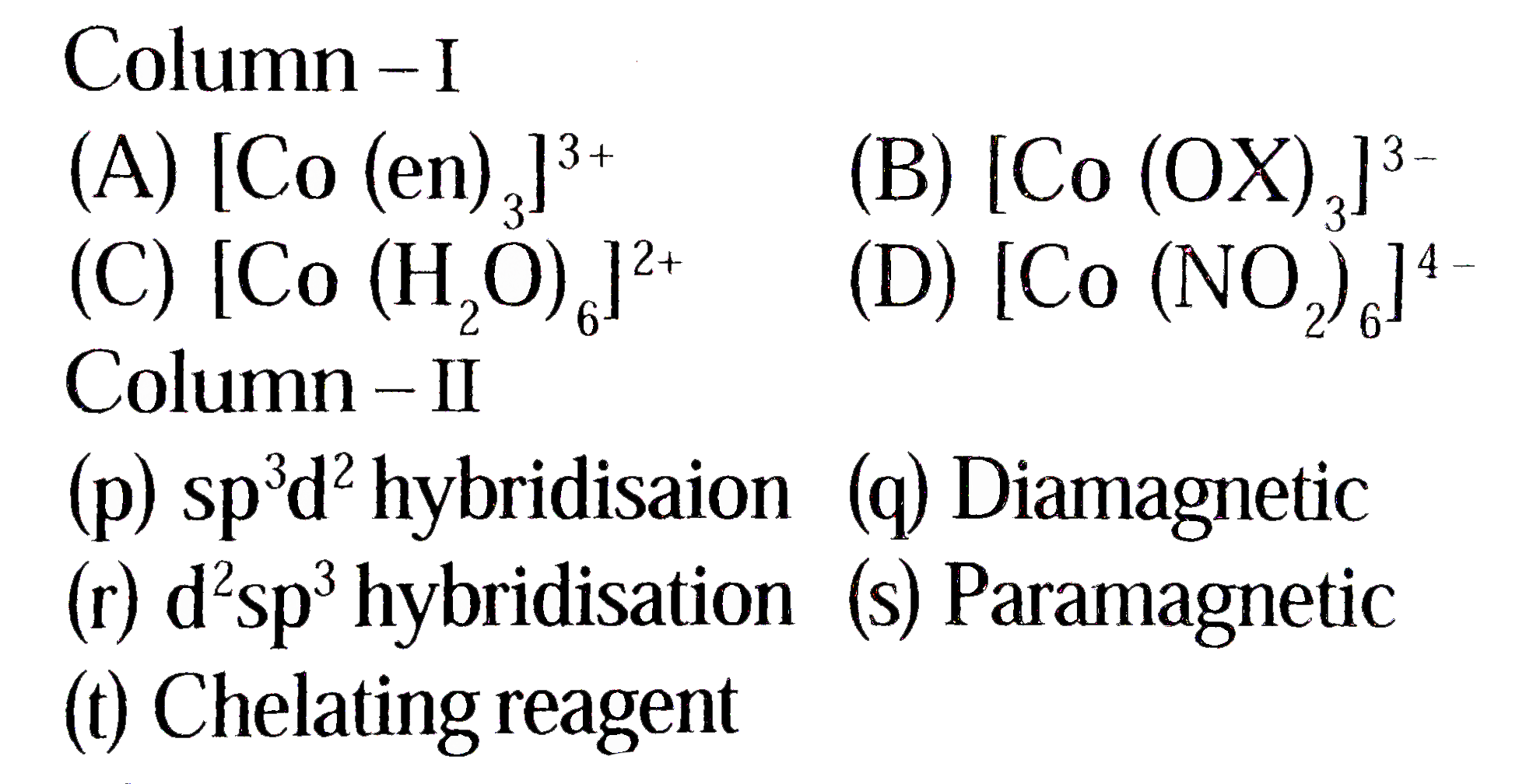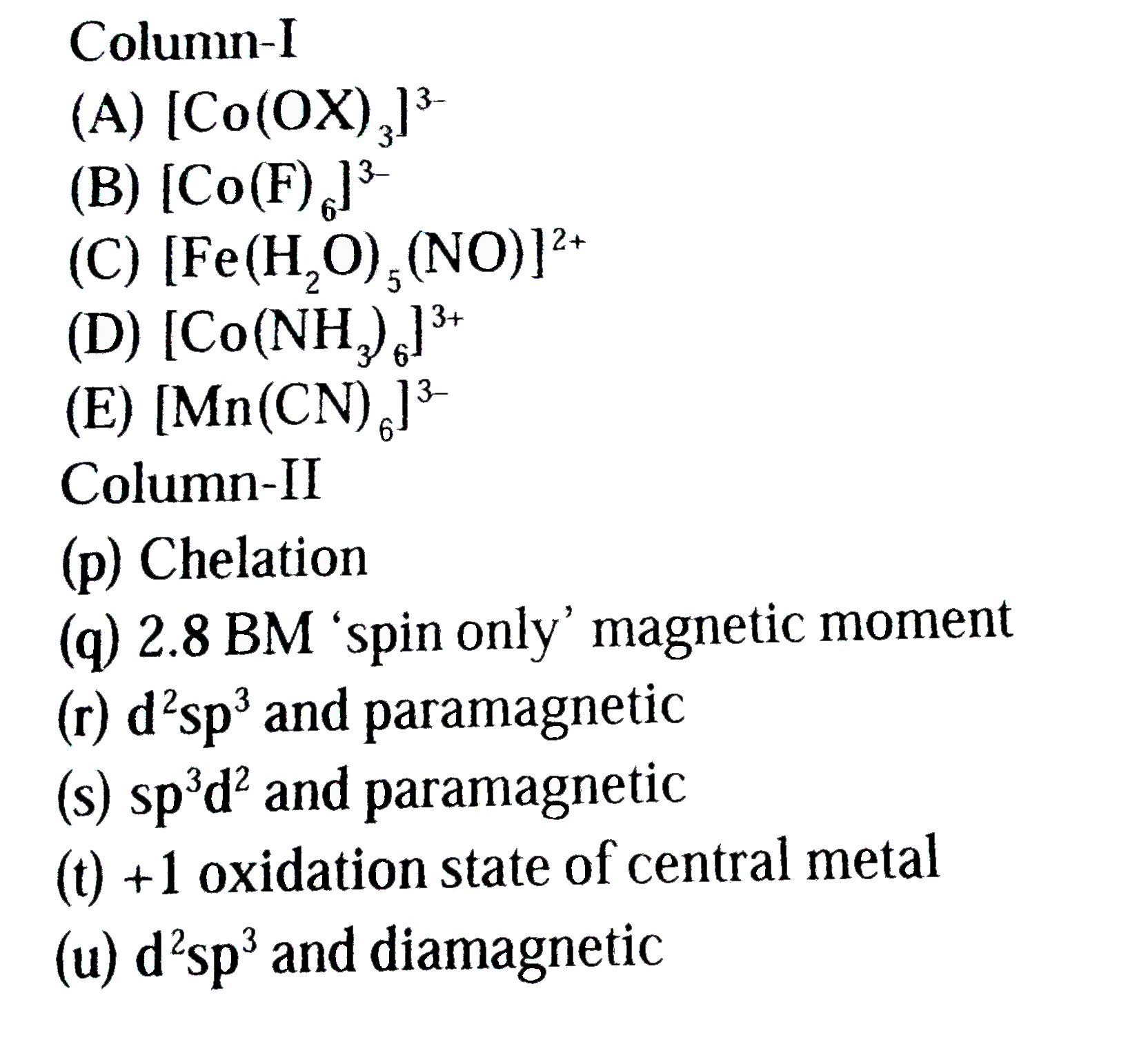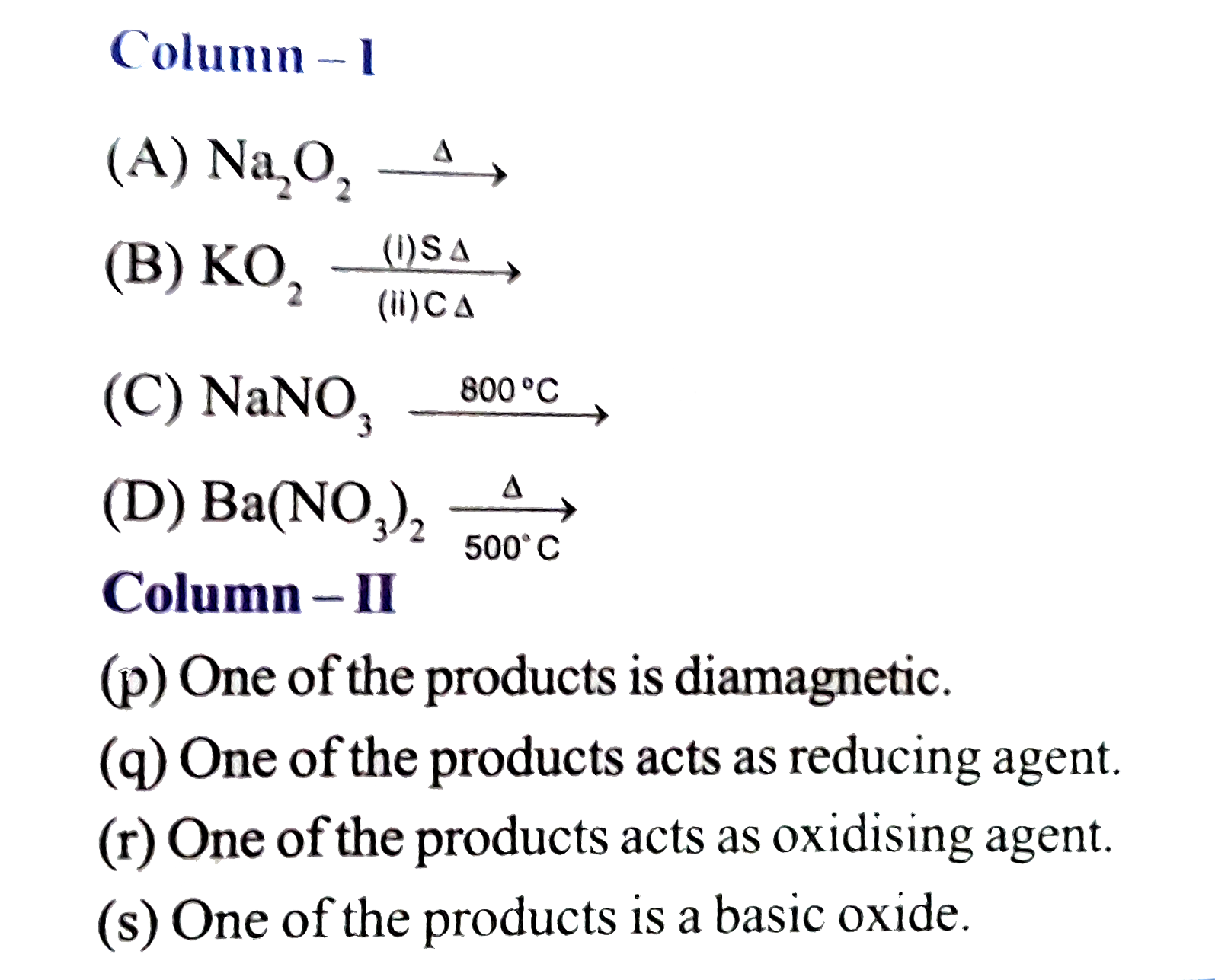Match the reactions listed in column(I) with characteristic(s) of the products/typee of reactions listed in column(II).
 .
.
The correct Answer is:A, B, C, D
Topper's Solved these Questions
- D & F-BLOCK ELEMENTS & THEIR IMPORTANT COMPOUNDS BOOK - RESONANCECHAPTER - D & F-BLOCK ELEMENTS & THEIR IMPORTANT COMPOUNDS EXERCISE - Exercise 2
40 Videos
- D & F-BLOCK ELEMENTS & THEIR IMPORTANT COMPOUNDS BOOK - RESONANCECHAPTER - D & F-BLOCK ELEMENTS & THEIR IMPORTANT COMPOUNDS EXERCISE - Exercise 3
65 Videos
- D & F-BLOCK ELEMENTS & THEIR IMPORTANT COMPOUNDS BOOK - RESONANCECHAPTER - D & F-BLOCK ELEMENTS & THEIR IMPORTANT COMPOUNDS EXERCISE - Match the column
1 Videos
- CHEMICAL EQUILIBRIUMBOOK - RESONANCECHAPTER - CHEMICAL EQUILIBRIUMEXERCISE - Advanced Level Problems (Part-3)(Stage-5)
2 Videos
- GASEOUS STATEBOOK - RESONANCECHAPTER - GASEOUS STATEEXERCISE - PHYSICAL CHMISTRY (Gaseous State)
47 Videos
Similar Questions
Knowledge Check
Match the reaction listed in coloumn-I with characteristic(s) listed in column-II
 A1−p,q,2−p,q,s,3−r,4−sB1−p,q,2−p,q,r,s,3−r,4−sC1−p,2−p,q,r,s,3−r,4−sD1−p,q,2−q,r,s,3−s,4−r
A1−p,q,2−p,q,s,3−r,4−sB1−p,q,2−p,q,r,s,3−r,4−sC1−p,2−p,q,r,s,3−r,4−sD1−p,q,2−q,r,s,3−s,4−r
Match the compounds listed in column I with characteristics type of reaction listed in column II.
Column IColumn II(A)XeF2(p)Undergoes hydrolysis with water(B)XeF4(q)Acts as oxidising agent(C)XeF6(r)Undergoes addition reaction(D)XeO3(s)has lone pair of electrons(t)Gives disproportionation reaction with H2OorOH−
View SolutionMatch the pairs of complexes/compounds listed in column(I) with the characteristic(s) of the reaction products listed in column(II).
 .
.
View SolutionMatch the complexes listed in column-I with characteristic (s)/type of bridisation listed in column -II

View SolutionMatch the compounds listed in column-I with characteristic type of reaction listed in column-II

View SolutionMatch the compounds listed in column-I with characteristic type of reaction listed in column-II

View SolutionMatch the complexes listed in column-I with characteristic (s)/type of hybridisation olisted in column-II.

View SolutionMatch the reactions given in column-I with the characteristic(s) of the reaction products given in column-II

View Solution


